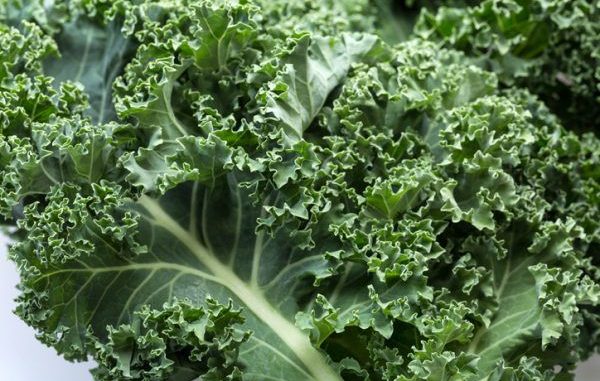
By: Cat Ebeling, BSN, co-author of the best-sellers: The Fat Burning Kitchen, The Top 101 Foods that Fight Aging & The Diabetes Fix
Kale used to show up on people’s plates as a barely edible garnish, but in the last several years, it suddenly skyrocketed to fame as health fanatics everywhere discovered its many nutritious attributes.
Kale now takes center stage as a salad ingredient, a smoothie standby, chips, food additive, or main dish ingredient. Unfortunately however, kale has fallen from grace as the superstar superfood, to one of the “Dirty Dozen”, as one of the most herbicide/pesticide-contaminated vegetables in the United States, according to the U.S. Environmental Working Group (EWG) that rates produce for their herbicide/pesticide content.
This year, kale ranks third, just behind strawberries and spinach. According to the EWG, the average kale sample contains over five different types of herbicides or pesticides, in spite of being thoroughly washed. One of the more contaminated samples actually contained up to 18 different pesticide residues.
Do these pesticides outweigh the value of the nutrients in kale? Well, studies have shown pesticides to be linked to cancer, diabetes, autism, ADD/ADHD, and other serious health issues.
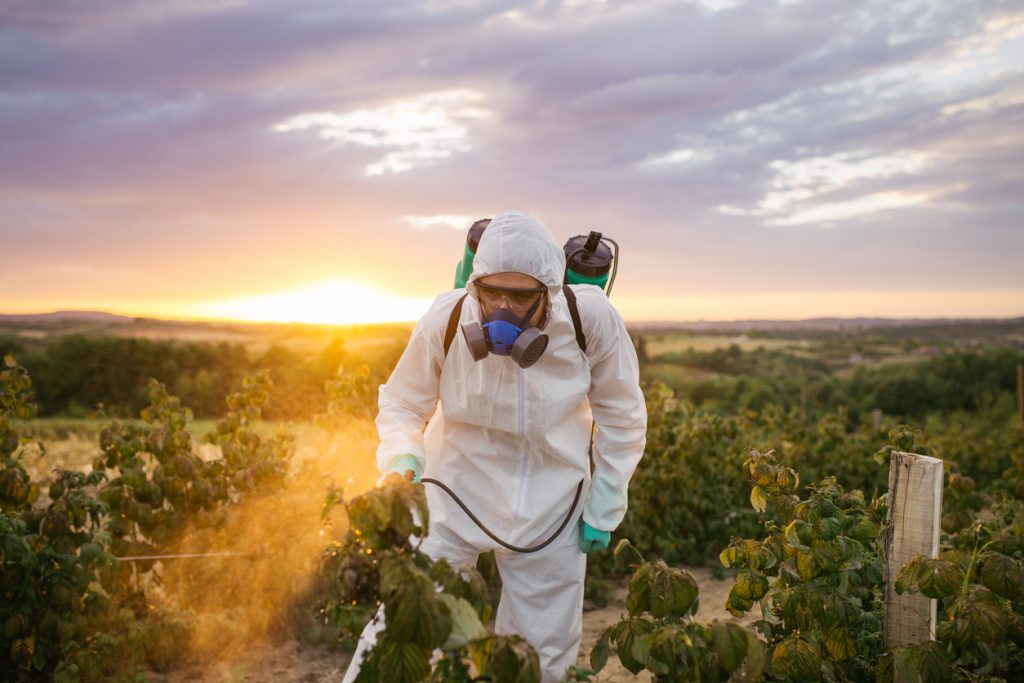
One of the primary pesticides showing up in kale is an herbicide called DCPA, or Dacthal. Dacthal has been used as a weed-killer for strawberries, many other vegetables, beans and cotton. But in 2005, Dacthal use was curtailed because of concerns that it was leaching into groundwater and was toxic. While the European Union prohibited all uses of this herbicide, the United States still uses Dacthal on sweet potatoes, eggplant, turnips and, of course, kale.
The problem with Dacthal, however, is that even the EPA has found evidence that Dacthal can cause cancer. The organization has listed the herbicide as a possible carcinogen based on a two-year study that linked DCPA to thyroid and liver tumors in rats, and while the effects on humans haven’t been tested, it’s a safe bet to believe it’s not healthy for us, either.
The EWG analysis also found that 30% of the kale samples contained bifenthrin and cypermethrin, two other pesticides that have been classified by the EPA as possible human carcinogens based on studies in mice. Exposure to these chemicals could cause nausea, headaches, and neurological issues, such as tingling and numbness.
The biggest problem with kale and these toxic pesticides is that kale is a leaf, so it will absorb these toxic sprays. There is no peel you can remove to help reduce the exposure and washing the kale does not help. These pesticides permeate the kale through and through.
Kale and Your Thyroid
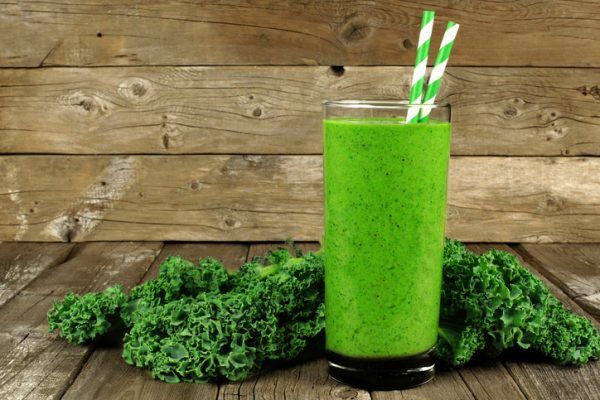
For some people, the thought process goes like this–if a little bit is healthy, then a lot should be REALLY healthy. Unfortunately, for many things, including kale, this is not true. Kale in larger quantities, especially in the form of juicing, can actually be harmful to healthy thyroid function.
Kale is considered a goitrogenic food, meaning that it contains substances called goitrogens that can block proper thyroid function. Cruciferous vegetables, like kale, are considered goitrogenic. Other goitrogenic vegetables include arugula, bok choy, broccoli, brussels sprouts, cabbage, cauliflower, collard greens, mustard greens, turnips, and watercress.
These veggies contain a substance called thiocyanate, which in larger amounts, can interfere with our bodies’ ability to utilize iodine, a key nutrient for production of thyroid hormones. Exposure to high amounts of thiocyanate can interfere with the normal thyroid function and cause hypothyroidism, or low thyroid. This creates symptoms like weight gain, depression, slow hair growth, lowered immune status, and more.
The health benefits of eating kale and other cruciferous veggies generally outweighs any issues with thyroid function, but eating larger amounts of cruciferous vegetables like kale, can definitely interfere. The biggest problem with kale and thyroid function is when it is juiced. Juicing requires large amounts of the vegetable to create a small amount of juice. But juicing creates a very concentrated product with larger than normal amounts of thyroid-interfering goitrogens, among other things.
The risks of lowered thyroid function may be exacerbated in those who are already iodine deficient, especially vegetarians and vegans—often just the folks who are juicing and drinking large volumes of veggie juices with kale.
Other Toxins in Kale
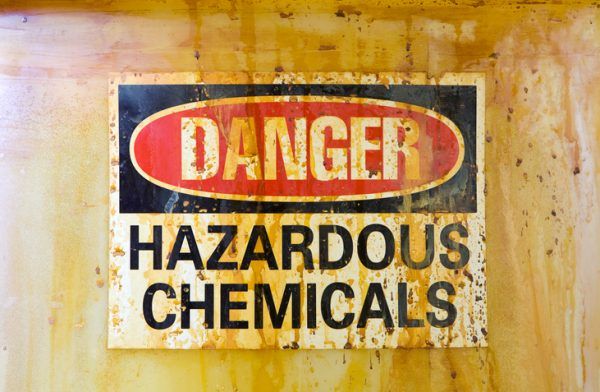
Several years ago, research conducted in California by a molecular biologist by the name of Ernie Hubbard connected complaints of fatigue, brain fogginess, nausea and other symptoms in patients at a health clinic to high kale consumption.
Hubbard found higher than normal levels of the toxic mineral thallium in locally grown kale, as well as in the patients’ urine. Hubbard also found traces of other heavy metals including cesium, cadmium, aluminum and arsenic in other cruciferous vegetables. And it seems that the organically grown kale accumulates more of this heavy metal than conventionally grown kale.
While the source of the thallium was not determined from the soil or the vegetable, it was determined that the complaints from patients, combined with their reported kale consumption, urine test results, and the thallium levels found in the kale and soil suggested low-level thallium poisoning.
Other studies have found similar results. A study by Czech Republic agricultural researchers in 2006 investigated kale’s uptake of thallium from soils with a naturally high amount of the element, and concluded it could seriously endanger the food chain. This Chilean study published in 2009 examines the presence of thallium in potatoes grown in the northern region of the country, and finds an “important risk.” And this Canadian review in 2004 by researchers at the University of Regina, Saskatchewan, noted thallium “can be transferred from soils to crops readily and accrues in fuel crops.”
Unfortunately, when it comes to thallium, even low-level exposures can cause symptoms such as nausea, diarrhea, stomach pain, hair loss, and peripheral neuropathy. This means that people who eat a lot of cruciferous vegetables, including kale, may be exposing themselves to high levels of thallium.
How Much Kale Can You Safely Eat?
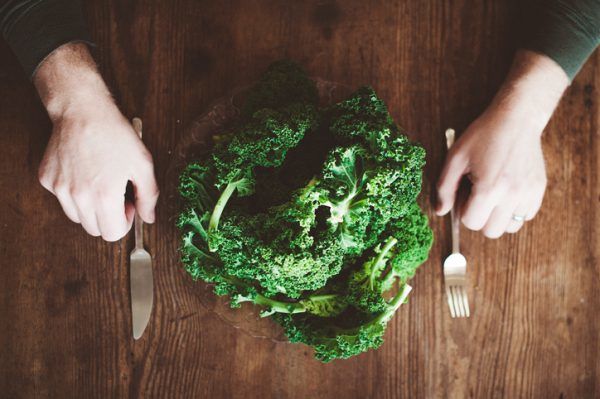
If you are an occasional kale eater, you shouldn’t worry too much about interfering with your thyroid function, or thallium. The most important though, is to choose organic kale.
Kale is jam-packed with nutrients. A single cup of raw chopped kale gives you more than 200% of your daily allowance of vitamin A and almost 700% of vitamin K. It’s also full of vitamins like B6, calcium, vitamin C, and potassium.
Plenty of research also suggests that cruciferous vegetables like kale can protect against certain types of cancer. Kale is also high in antioxidants including beta carotene and vitamin C, along with various flavanoids, and polyphenols.
Kale also contains the flavonoids quercetin and kaempferol, which are found in relatively large amounts in kale. These substances in kale have been studied thoroughly and have powerful heart-protective, blood pressure-lowering, anti-inflammatory, anti-viral, anti-depressant and anti-cancer effects, to name a few.
Bottom Line
Kale is a very healthy superfood. Just don’t overdo and eat tons of kale on a daily basis, or you may be ingesting large amounts of pesticides, herbicides, thallium, and goitrogens that will have a negative effect on your health and your thyroid gland. Be especially careful of drinking kale juice. It takes a large quantity of kale to make juice, and you end up drinking concentrated amounts of the above toxins. Instead, enjoy a wide variety of superfoods on a daily basis.
